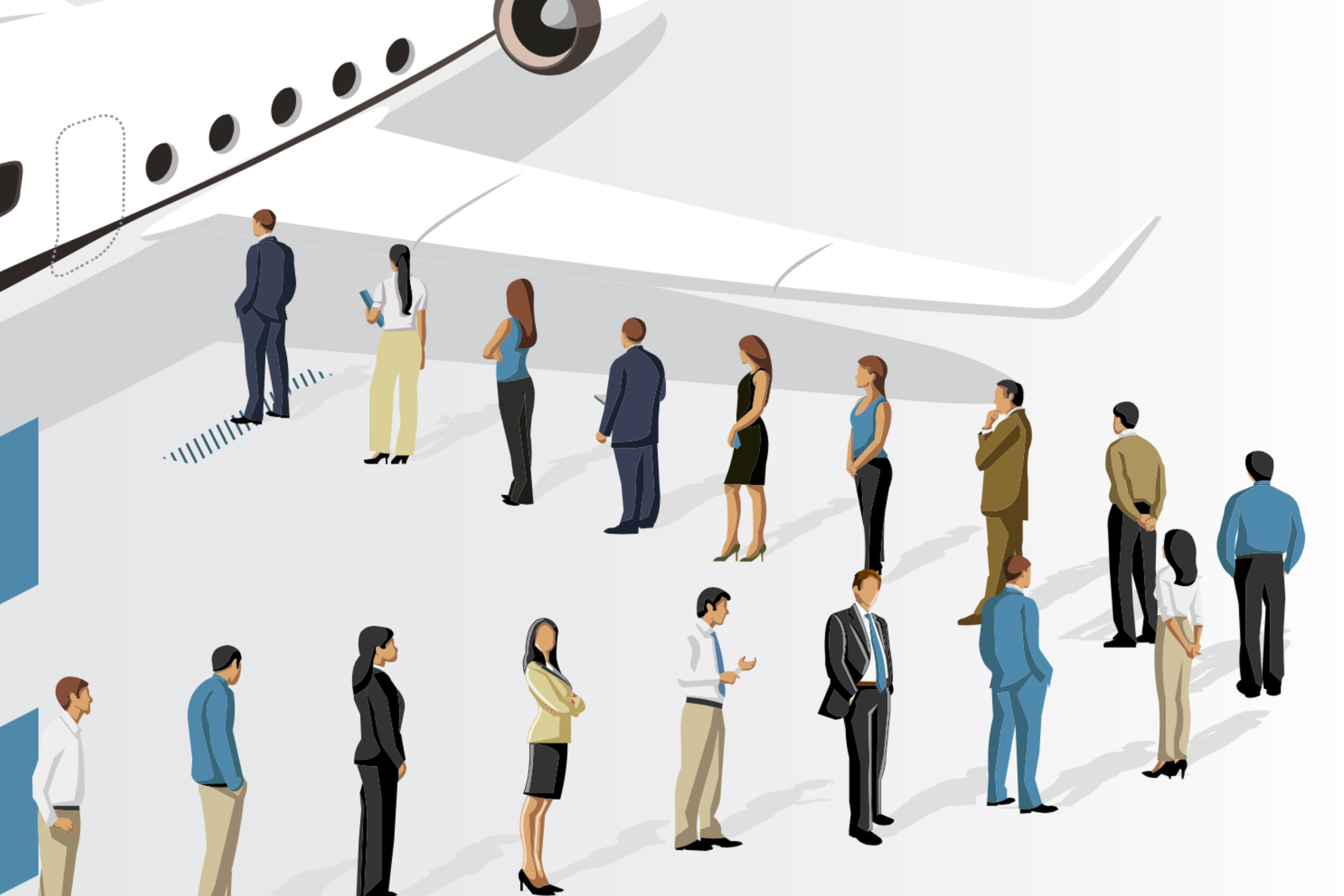
Having an aircraft utilization policy helps set expectations for everyone – from the management team and board of directors to passengers and flight department staff.
Nov. 23, 2015
Every NBAA member should have a flight operations manual (FOM) with polices and procedures for maintenance schedules, pilot duty times, flying limitations and other operational considerations. But a flight department needs more than policies for how the aircraft will be operated safely and efficiently; it needs policies for how the aircraft will be used in the course of business.
“You need some rules of the road, so everyone understands why the company has an aircraft and what it’s used for,” said Eileen Gleimer, a partner and co-chair of the aviation practice at Crowell & Moring LLP, an international law firm headquartered in Washington, DC.

An aircraft use policy helps set expectations among the company’s passengers, management team, board and the flight department staff. It explains how the aircraft will serve the company’s business goals and establishes guidelines for appropriate use based upon those goals. It also sets up procedures for requesting and authorizing the aircraft and the process for making decisions on exactly how the aircraft will be utilized.
“One of the first questions is, ‘Who gets to use the aircraft and when?” said Sean Fitzgibbons, associate general counsel for an NBAA member company. “If you have a scheduling conflict, who gets bumped? Is there any limitation on the number of company leaders who can travel together? When passengers request the aircraft, do they have to describe the purpose of the trip? It makes it easier to have a written document, approved by the company leadership, that you can point to and say, ‘This is how we do things.’”
To be effective, an aircraft use policy should be developed with input from important stakeholders and have the full support of the company’s CEO or another top executive. The policy’s guidelines will be informed by the financial, tax, regulatory and risk-management issues tied to the aircraft.
The use policy doesn’t need to be a separate document; it could be a chapter (or several sections) in the larger operations manual. For some operators, it may only be one page long; for others, it could be 20 pages long.
How a Policy Helps
“You’re never going to think of every scenario that could possibly occur,” said Gleimer. “But as a lawyer, I start by looking at a worst-case scenario and work backward from there. One thing you don’t want to do is add provisions because they sound good. If something is included in the policy, it needs to be followed. You can provide exceptions for administrative procedures, but if the policy says the pilot has the final word on safety, the pilot needs to have the final word on safety. That’s where approval [of the use policy] by the chairman or CEO is critical.”
As issues come up in the course of operations, the policy should be revised to reflect the decisions stakeholders make about the aircraft.
“We’ve found that over the years, we’ve established rules for who can request the airplane, who authorizes a trip and scheduling protocol,” said Eve Gregory, flight services manager for C&S Aviation Services. “As those rules are established, we’ve added them to our FOM.”
In the day-to-day work of the flight department, Gregory and her colleagues refer to the policies on aircraft use frequently. When they need to communicate to administrative assistants that their passengers can’t be on the same airplane, the schedulers cite the executive travel policy. When a scheduling conflict arises, they refer to the policy that the most urgent business objective – such as closing a deal – takes precedence.
“We’ll definitely refer to the manual for scheduling,” said Gregory, “because it helps us make decisions. We check to make sure we have the right language when we’re explaining a scheduling issue and need to offer alternative suggestions.”
Update It Regularly
In addition to updating the policy as issues come up and revisions are made, operators and advisers recommend updating it on a regular basis, about every six to 18 months, depending how often operations change. Normally, anyone in the flight department, as well as the passengers, can suggest a revision. Revisions are then sent out to all stakeholders to review.
It can also be useful to train or test flight department personnel on the aircraft use policy. “You get comfortable with a routine, so it’s good to refresh,” said Gregory. “Internally, we all took a short test developed by our training officer, it was a fun way to get everyone to open the book.”
You need some rules of the road, so everyone understands why the company has an aircraft and what it’s used for.
For flight departments that don’t have an aircraft use policy, NBAA has resources to help start creating one. Creating a policy can prompt a company to think about difficult questions, like business continuity and hidden costs, but it will be a useful discussion.
“If you’ve been flying around without a use policy, you probably have some informal way of deciding what you do and don’t do,” said Fitzgibbons, “but if a scheduler or director leaves your department, you lose all that institutional knowledge. Better to write it down.”
For a detailed guide to writing or revising an aircraft use policy, including video tutorials and sample policy language, visit www.noplanenogain.org.


 International Business Aviation Council Ltd.
International Business Aviation Council Ltd.